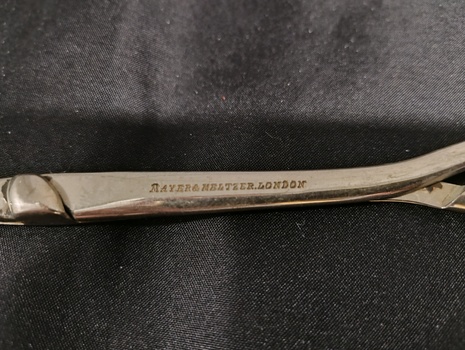Historical information
André Levret (8 January 1703 in Paris – 22 January 1780) was a French obstetrician who practised medicine in Paris. He was a contemporary of famed English obstetrician William Smellie (1697–1763), and along with Jean-Louis Baudelocque (1745–1810), helped advance the science of obstetrics in 18th century France.
Levret is considered by many to be the most influential figure in 18th century French obstetrics. He is known for his work involving breech maneuvers and Caesarean sections. He wrote a number of influential books in the field of obstetrics and attracted students from all over Europe, among them German obstetrician Johann Lukas Boër (1751–1835). He is credited with improving the birth forceps by adding a "pelvic curve" to the instrument.
(Wikipedia)
Physical description
Surgical instrument. Instrument consists of two arms, loosely resembling a pair of scissors in shape. The arms are joined by a pin at centre, and each arm has a circular finger grip at top. The end of each arm curves upward and broadens into an elongated teardrop shape, with the end of each arm hollowed out so that only the edges remain. The inner edges of the end of each arm are corrugated for grip. Engraved text on one arm reads 'MAYER&MELTZER.LONDON'.
Inscriptions & markings
'MAYER&MELTZER.LONDON'






